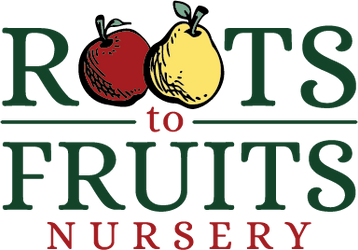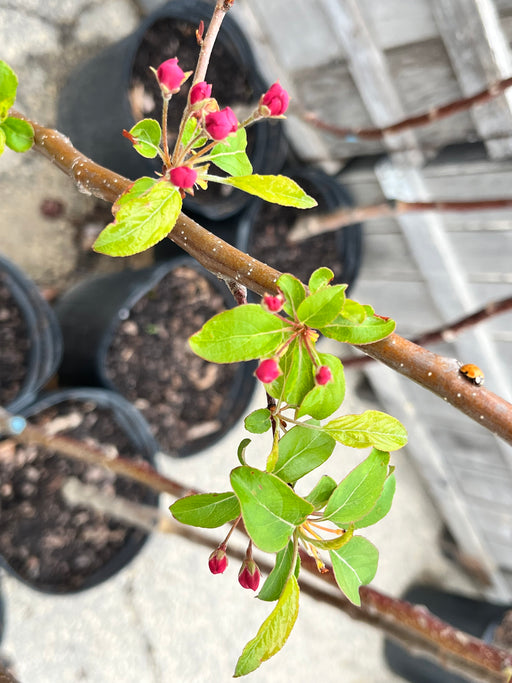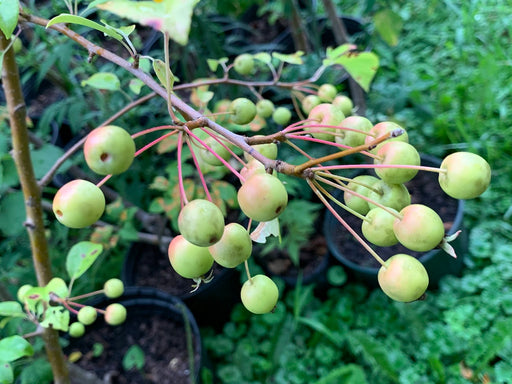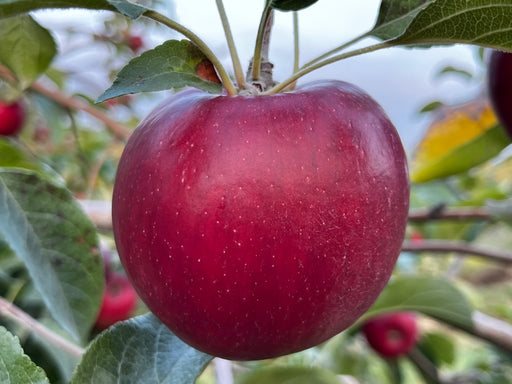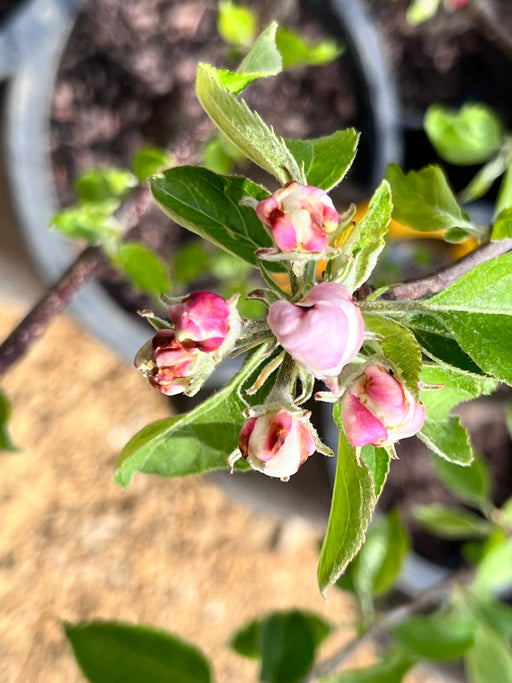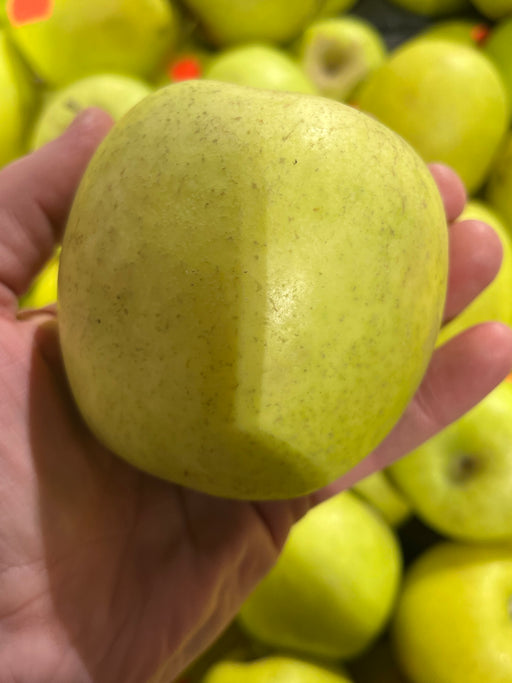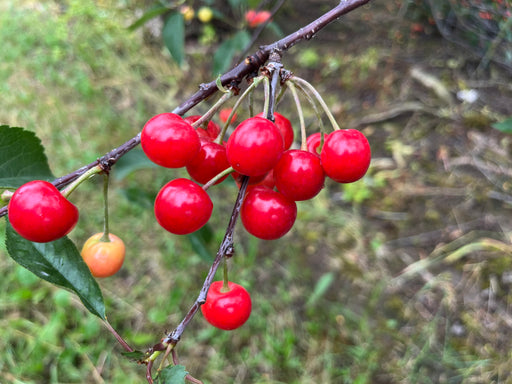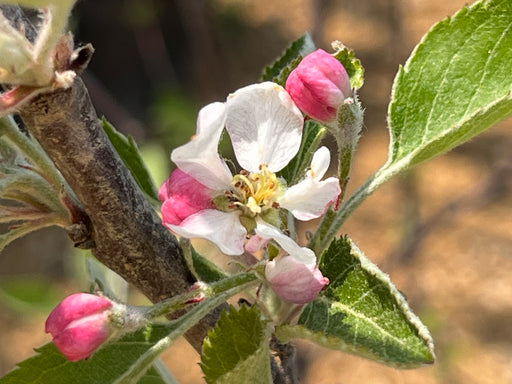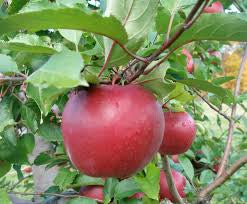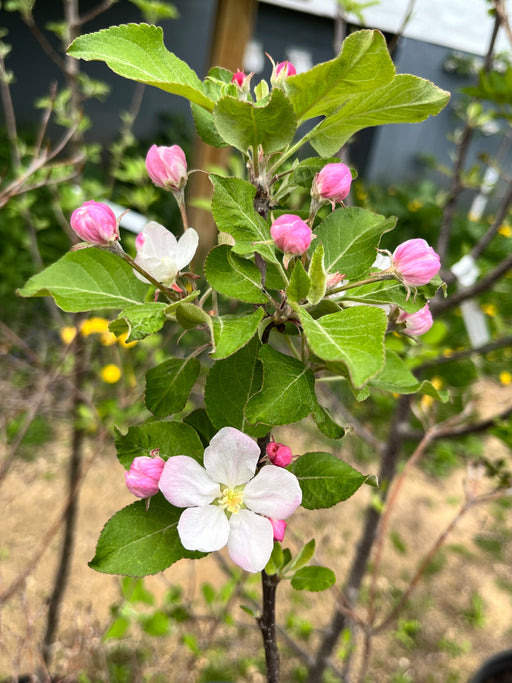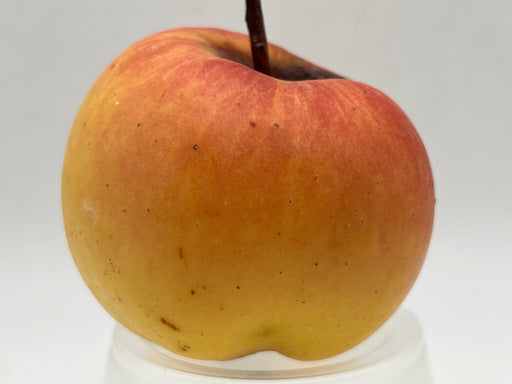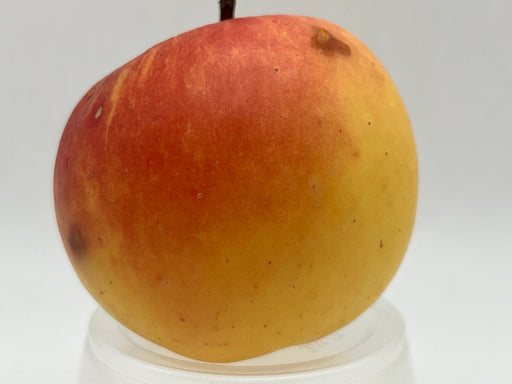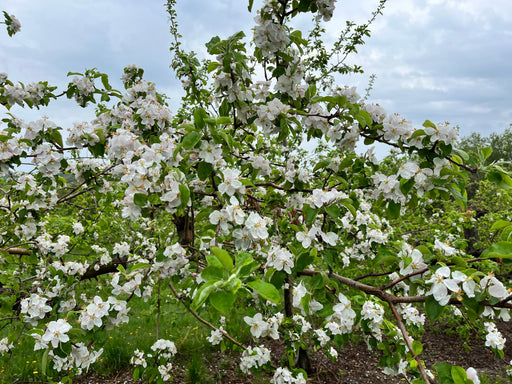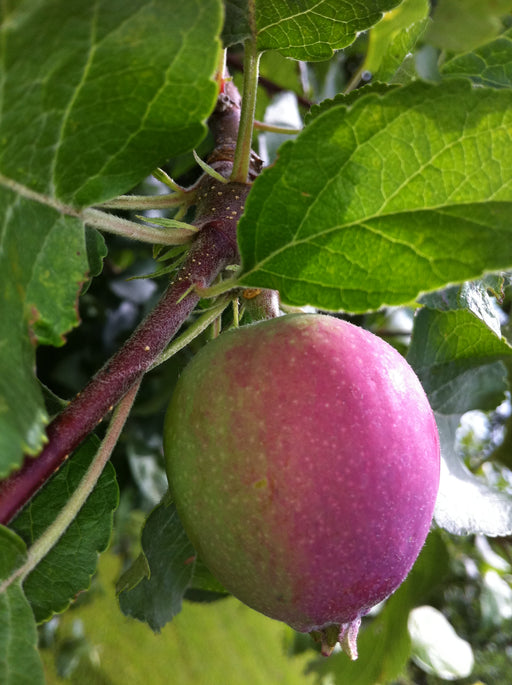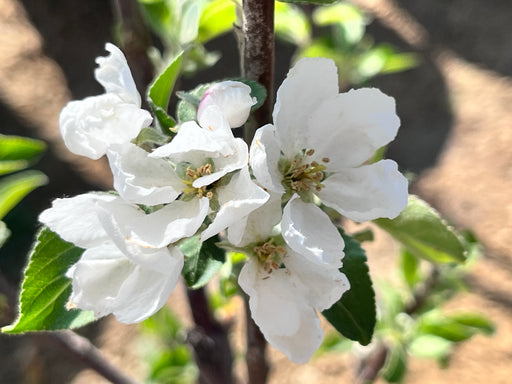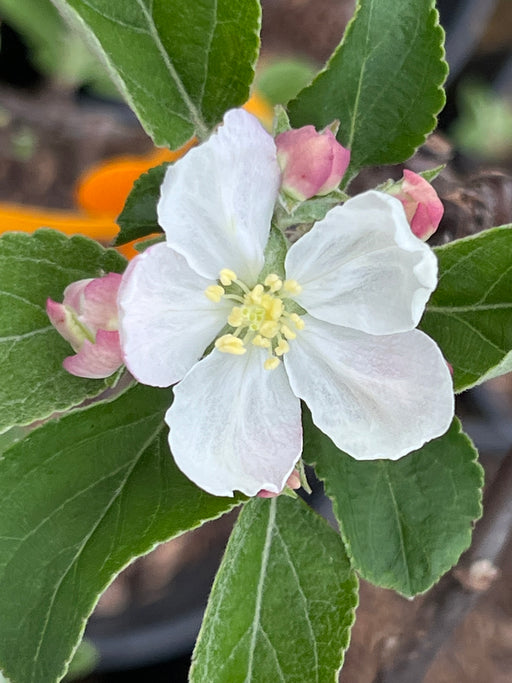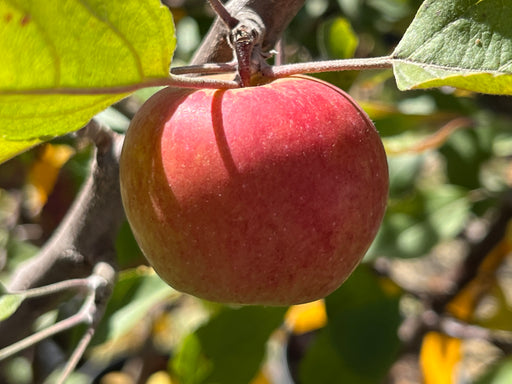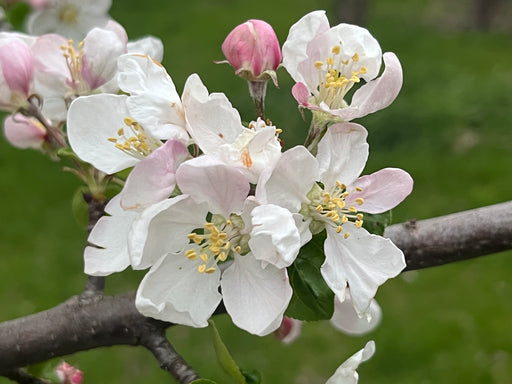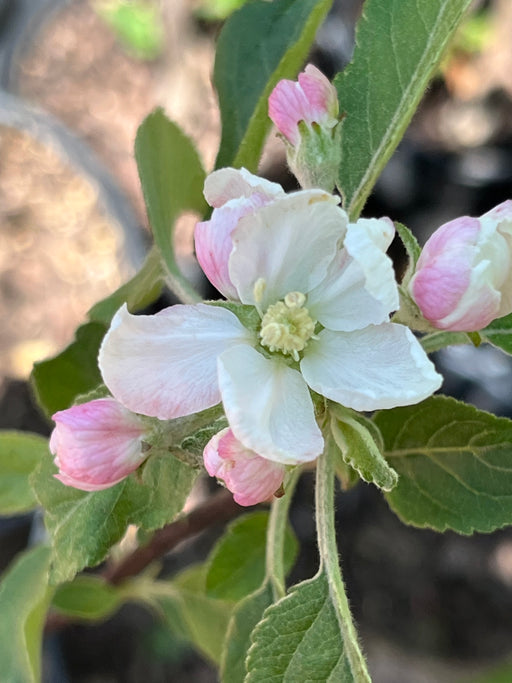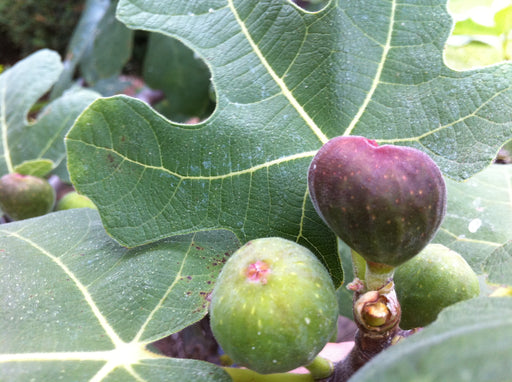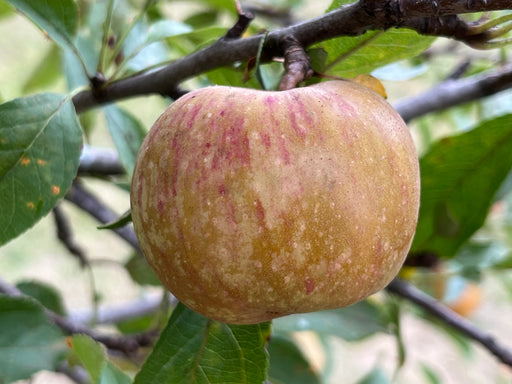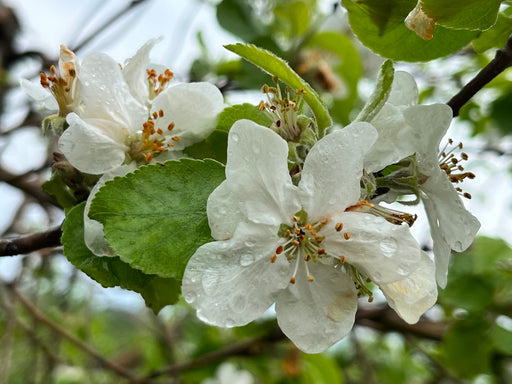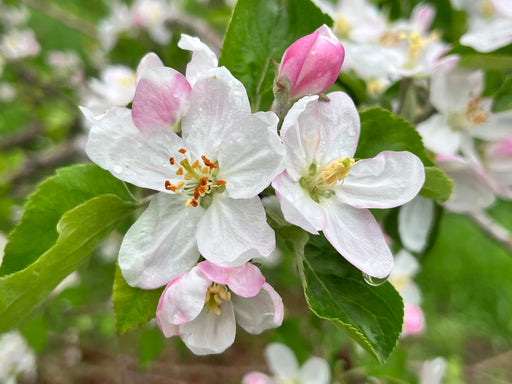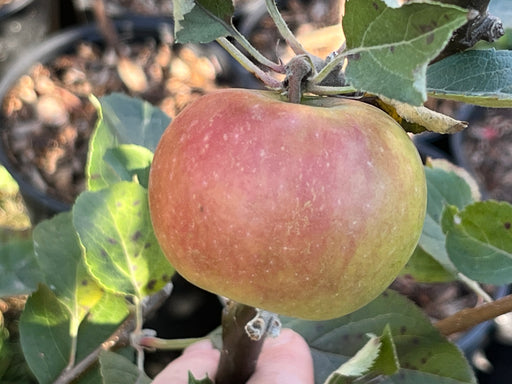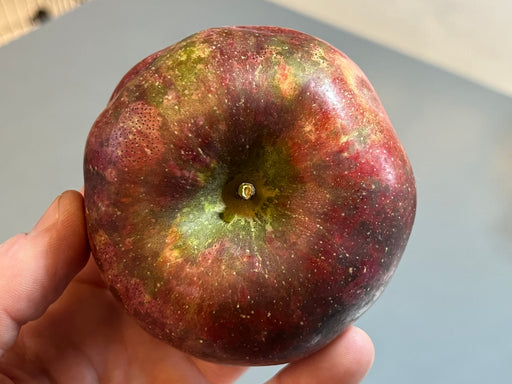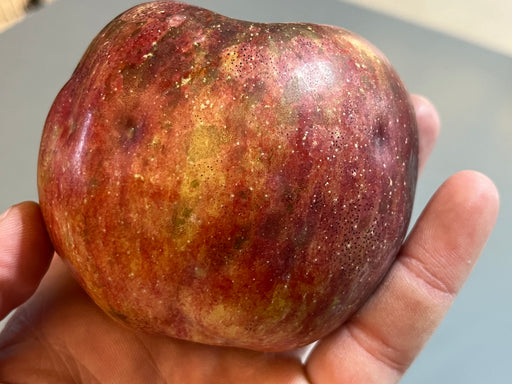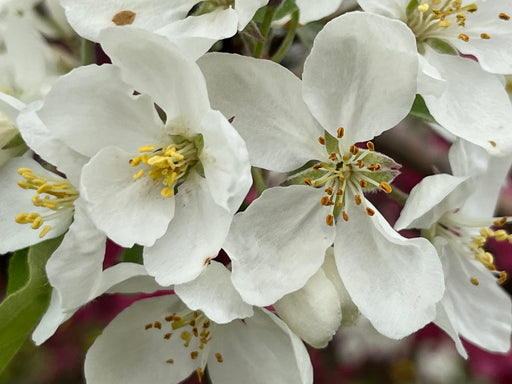Fruit Trees
Our apple trees, like many fruit trees, are propagated by grafting. There are two parts to an apple tree. The scion is the fruiting part of the tree, which gives you the variety of the apple, and the rootstock, which influences the mature size and hardiness of the tree, and determines the time it takes for the tree to fruit. We sell Standard, Semi-Dwarf, Dwarf, and Mini-Dwarf trees that do not require a lot of space and yet, will bear large fruit.
A few key notes on successful planting methods:
- Trees must be planted in well-drained soil
- Six hours of sunlight; full sun preferred
- Stake all trees for the first two years
- Dwarfs must have permanent stakes
- Tree guards should be used
- Plant at least two different apple tree varieties for Cross-Pollination
- Plant disease-resistant trees for less maintenance; we are happy to help make any suggestions you might need
We categorize our apple trees into at least five sizes: Petite, Maiden, Field Ready, Hand Select, and Container depending on the size of the tree. The Petite tree is our smallest graded tree less than 2 years in age; Maiden trees are usually 2 years old and are branchless. These are also called whips and will bear in 2-3 years. A Field Ready tree is 2-3 years old and might have some lateral branching, be thicker above the graft, and will bear in 1-2 years. The Hand Select trees are only about 20% of trees we have and are 3 year old trees, 6-9’ tall and can be heavily branched. You can expect fruiting on a Hand Select tree in about a year.
Frettingham Crabapple Trees
A Mid- Late season bloomer, these white blossomed, single petaled crabapples are small and numerous on the tree. Excellent pollinators for apple tr...
View full detailsCarolina Red June Apple
Early Fruiting apple tree- ripens in July. Bright red and briskly tart. Tree does well in different soils and tends to bloom late. Apples ripen ove...
View full detailsMutsu Apple Trees
Also known as a Crispin Apple, the Mutsu apple is a cross between the Golden Delicious and Indo apples and originates from the Aomori Prefecture in...
View full detailsCheropugy Bush Cherry
Developed from a specimen from the collection of a fruit collector named Vojtech Slavetinsky in the Czech Republic and is closely related to other ...
View full detailsRed Rome Apple Tree
In 1817, Joel Gillet discovered a seedling tree from a nursery delivery and one of his children planted it near the Ohio River in Rome Township. A ...
View full detailsAnna Apple Tree
Very early fruiting apple from Israel that can grow in warmer climates. USDA Zone: 5-10 Mature Height: M.111 ~18-21' tall; Semi-Dwarf Sun: Full Su...
View full detailsCriterion Apple Tree
The Criterion apple was discovered as a chance seedling near Parker, WA in 1968 and is descended from the Golden Delicious, Red Delicious, and W...
View full detailsSierra Beauty Apple Tree
This seedling tree was discovered in the high Sierra Mountains in California and thought to be a left over from the 1840s Gold Rush. Therefore, the...
View full detailsKandil Sinap Apple Tree
Discovered in the Sinop Peninsula- modern day Turkey- in the 1700s. The apple is strikingly long and oblong in shape; similar to an early Strawberr...
View full detailsJonadel Apple Trees
Description Coming Soon! USDA Zone: 4-9 Mature Height: B.9 ~ 8-10' tall; Dwarf Sun: Full Sun Bloom Group: 4, Late Mid Season Ripening Time: Late Se...
View full detailsEmpress Apple Tree
L. Frederic Hough of Rutgers University first crossed this tree in 1969 by pairing the Jonamac x Vista Bells apples. The tree, having a similar sha...
View full detailsBinet Rouge Apple Tree
Grown in the Normandy region of France and noted as early as the 1870s, the Binet Rouge apple is primarily a cider apple. Designated as one of seve...
View full detailsBonfire Peach Tree
This peach is grape for small spaces and can even be planted in a container and kept indoors. Naturally a compact dwarf tree topping out at 7' tall...
View full detailsElstar Apple Tree
Dutch dessert apple first crossed in the 1950s. It can count the Golden Delicious in its parentage which gives the apple a well balanced flavor tha...
View full detailsChieftain Apple Tree
Cross of a Jonathan and Delicious and created back in 1917 but wasn't released to the public in the 1990s. Very sweet and cold hardy- it is also di...
View full detailsBrown Turkey Fig Tree
Description Coming Soon! USDA Zone: 6-9 Mature Height: 25-35' in the ground and 6-8' in a container Sun: Full Sun Ripening Time: July- September P...
View full detailsBelle de Boskoop Apple Tree
1850s Heirloom Apple from the Netherlands. Dessert and culinary apple that keeps its shape when cooked. Generally sharper in flavor with denser fle...
View full detailsMajor Apple Tree
An English cider apple producing a full bittersweet juice. USDA Zone: 4-9 Mature Height: G.41 ~12-14' Dwarf Sun: Full Sun Bloom Group: 3 Mid Seaso...
View full detailsReine de Pomme Apple Tree
Description Coming Soon! USDA Zone: Mature Height: M.111 ~18-21' tall; Semi-Dwarf Sun: Full Sun Bloom Group: Pollination: Required Ripen/Harvest Ti...
View full detailsHoliday Apple Trees
Discovered in Ohio in 1964. The offspring of the Jonathan and Macoun Apples making this apple an excellent dessert apple. USDA Zone: 4-9 Mature He...
View full detailsClaygate Pearmain Apple Tree
Popular eating apple from Victorian England. Noted for a strong resistance to apple scab. USDA Zone: 4-8 Mature Height: G.935 ~11-13' tall; Dwarf ...
View full detailsDesert King Fig Tree
Description Coming Soon! USDA Zone: 6 (with strong winter protection)-10. Outdoor hardiness to Zone 7. Mature Height: 25-35' in the ground and 6-8'...
View full detailsRoyal Limbertwig Apple Tree
Early 1800s cider apple. This variety is one of several Limbertwig variants that have regained popularity in the recent decades. First trees were p...
View full detailsRed Spy Apple Tree
Discovered in New York in 1895 as a sport of the then common Northern Spy Apple. It is larger and redder than its parent yet retains much of the fl...
View full details